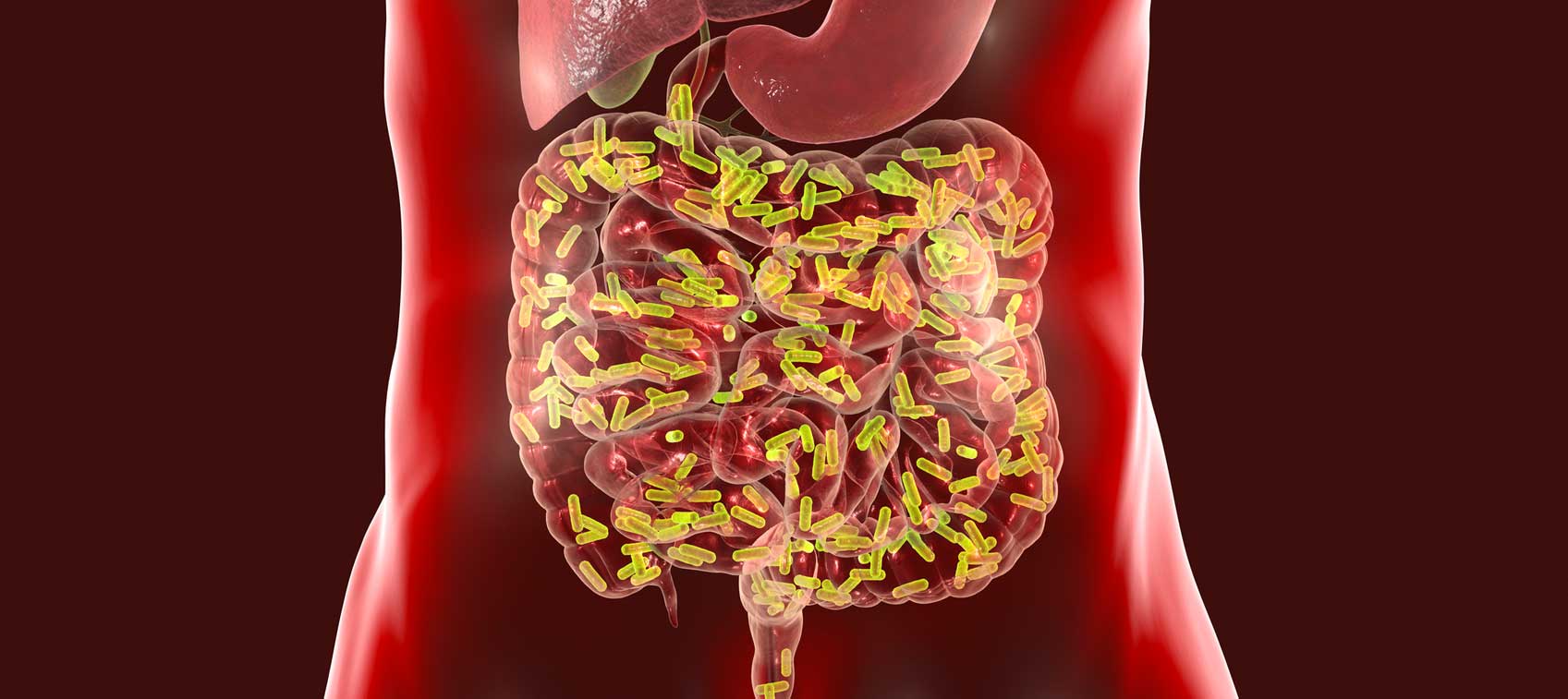
I’ve been writing about probiotics for at least a couple of decades. Now over the past several years, a few new terms have become more mainstream, both related to probiotics: prebiotics and postbiotics.
Pre-, pro-, and postbiotics work together in your gut to help build digestive, immune system, and overall health. Here’s what you need to know about all three, and how to ensure you have robust levels.
What are Probiotics?
Probiotics are beneficial microorganisms (mostly bacteria, but also fungi and even viruses) that reside on and in the body. “Pro” means “for” and “biotic” means “life.”
We have numerous microorganisms that live on our skin and internally, primarily in the respiratory and digestive tracts. These are all areas where our bodies are constantly in touch and interacting with the environment that surrounds us. Since we live in a “sea of microbes”—keeping our bodies' microbes in balance is critical for good health. An imbalance or overgrowth of harmful microbes can lead illness, disease, and even a shortened lifespan.
The best way to keep your gut bacteria in balance is by fueling your body with beneficial microbes (probiotics). Some of the best food sources of probiotics are fermented or cultured products such as yogurt, sauerkraut, and pickled vegetables. Yet, while you may find many types of fermented food at the grocery store, most of the beneficial microbes they contain have been rendered useless by sterilization and pasteurization procedures used to extend shelf life.
I firmly believe that fermented foods should be a part of everyone’s diet, which is why I recommend making them yourself. (It’s way easier than you think to ferment your own food). In addition to including a wide variety of homemade fermented foods, I recommend supplementing with quality probiotic supplements.
What are Prebiotics?
The probiotics in and on your body are live microorganisms and need nourishment, which is where prebiotics come in. They’re the “foods” that beneficial microbes consume that keep them alive.
To be a prebiotic, a substance must meet three criteria:
- It can’t be broken down by stomach acid or enzymes and absorbed into the body.
- It must be able to be fermented by the microflora in the gut.
- It must be a food source only for the beneficial microbes in the gut and not any pathogenic bacteria that might reside there.
One form of prebiotic is soluble (not insoluble) fiber. While both forms of fiber are important, there’s a huge difference between the two.
Insoluble fiber, sometimes referred to as roughage, can’t be digested by either humans or microbes. It typically comes from grains and vegetables. Instead of being digested, insoluble fiber acts much like a broom, helping to scrub the intestines and stimulate intestinal contractions, which move food and waste material through the gastrointestinal tract. Insoluble fiber is necessary for regular bowel movements because it helps remove waste from the body.
Soluble fiber, on the other hand, helps the beneficial bacterial and other microbes in the gut survive and flourish. Soluble fiber mixes with water and forms a gel-like substance, which provides a feeling of fullness. By slowing down digestion and modulating absorption, it helps reduce blood sugar spikes and the need for extra insulin to be released.
Once this gel reaches the colon, the beneficial bacteria start to ferment and feed on the fiber. In the process, these bacteria produce their main source of energy, butyric acid. Butyric acid further stimulates the growth of good bacteria. It also regulates hormone and insulin levels, improves the absorption of minerals, and reduces inflammation and damage to the intestinal wall (which can help prevent leaky gut syndrome, ulcerative colitis, inflammatory bowel disease, and even colon cancer). It greatly improves immunity as well.
Prebiotics are abundant in our food supply. The key is to always consume a wide variety of fruits and vegetables. With a healthy, fiber-rich diet, there’s little need to supplement prebiotics. However, many higher quality probiotics will contain a small amount to help “jump start” the process. The most common one is called fructooligosaccharide (FOS).
What are Postbiotics?
Technically, a postbiotic is the byproduct of a probiotic consuming a prebiotic. In simpler terms, it’s what beneficial bacteria produce when they ferment soluble fiber.
The short-chain fatty acid butyric acid (mentioned earlier) is one such postbiotic. Additional postbiotics include amino acids (tryptophan, tyrosine, etc.), neurotransmitters (serotonin, GABA, acetylcholine, etc.), peptides, and other short-chain fatty acids like acetate and propionate.
Postbiotics may be “waste products,” but they are anything but useless. They are actually responsible for a multitude of important, health-enhancing functions in the body, not the least of which is better immune function.
It has been confirmed that at least 70% of our entire immune system resides in the gut, thanks to the intricate relationship between prebiotics and probiotics. So, if you want to boost your immune system, fortifying the defenses in your gut (by increasing soluble fiber and fermented foods and/or taking probiotic supplements) is the best place to start.
And if you want to take it a giant step further, a natural postbiotic-like compound can boost immune function even more: Diamond V XPC (made by Diamond V Mills in Cedar Rapids, IA).
Unusually Significant Health Benefits
Diamond V XPC is a fermented yeast culture that has been protecting the health of animals for about 80 years. It’s made from a type of baker’s yeast and added to the animal feed. It has been part of my personal program for the last 15+ years, and I also use it on my ranch animals.
Years ago, I received a call from someone at Diamond V Mills who shared with me that employees who were regularly exposed to the dust from the yeast culture during its production had been experiencing unusually significant health benefits. They noticed everything from fewer cases of colds and flu to improvement in chronic allergies, autoimmune problems, gastrointestinal issues and, in one case, even halting the progression of retinitis pigmentosa, a condition that can lead to blindness. Many of the 35 employees hadn’t experienced a cold, flu, or other infection in 25 years.
Research later confirmed several benefits of ingesting this product, including:
- Significantly increased immunoglobin A (IgA) in the skin, eyes, mouth, and mucus membranes. IgA latches onto pathogens coming in through the respiratory and digestive tracts. IgA is our first line of defense against invading pathogens.
- Fourfold increase in natural killer cell (NK cell) activity in the immune system. NK cells are the second line of defense and independently seek out and destroy pathogens and infected cells.
- Higher antioxidant activity. This yeast culture has over three times the antioxidant capacity of any known food. Antioxidants are our immune system’s third line of defense, protecting cells from oxidative damage.
- Improved ratio of immune helper cells (CD4) to suppressor cells (CD8). Helper cells activate and stimulate the production of antibodies, and suppressor cells help keep the immune system from “overreacting,” which occurs with autoimmune disorders.
- Higher levels of antibodies.
- Boosted levels of glutathione, the body’s most potent antioxidant. Glutathione levels decrease with age and are directly related to health and longevity. And much like certain species of mushrooms, it contained immune-boosting beta glucans and mannans.
- Reduced inflammation in both the skin and the digestive tract.
- Increased numbers of beneficial gut bacteria and reduced numbers of harmful species.
- Improved digestive function.
When I first broke the news about Diamond V XPC 15 years ago, I warned about the possibility of a worldwide pandemic. I felt this was one product that the world needed to know about—because it could be an inexpensive, readily available, and effective method of preventing these types of infections.
I think that advice is still relevant, even more so in today’s world. Here are a couple of excerpts of what I wrote back then.
“The increase in antibiotic-resistant respiratory diseases has become an ever-increasing, worldwide concern. I've said before that it's not if we'll have a worldwide respiratory epidemic, it's just of matter of when. TB, SARS, and bird flu are just a few examples of such serious threats beginning to emerge... Since this flu strain and other viruses and bacteria are constantly mutating, I have little hope that any vaccine will afford protection. Trying to create a vaccine brings up the vision of my three-year-old popping soap bubbles from a bubble machine. By the time he's lucky enough to catch and break one, there are dozens more released into the air. If one of these pathogens becomes virulent and able to pass from human to human, we're going to need more than just promises of a possible vaccine."
And this…
“You're undoubtedly aware that respiratory illnesses, and many other diseases as well, enter the body either through the nose, the eyes, or the gastrointestinal tract—from the mouth to the anus. This explains the standard hygiene recommendations during cold and flu season: Wash your hands repeatedly; cover your mouth and nose when sneezing; and keep your hands away from your mouth, nose, and eyes. Even following these precautions, however, doesn't provide total protection.
Immunoglobin A (IgA) is an antibody found in the mucosal lining of the respiratory and digestive tracts and an indicator of mucosal barrier strength. The research showed that the ingestion (even if through inhalation) of this fermented yeast culture was directly associated with astoundingly higher levels of IgA. This was obviously one of the determining factors as to whether one contracted an infectious disease or went years or decades without any infection whatsoever. I suspect this will also be a deciding factor in who survives and who succumbs if we're ever hit with a virulent worldwide pandemic.
One of the head researchers of this yeast culture showed the laboratory findings to a colleague who was highly trained and well-respected in the field of immunology. The colleague responded that the level of immune markers in individuals ingesting this product was much higher than that seen in other humans. This, in turn, gave those people's immune systems significantly more ability to kill viruses, bacteria, and tumor cells.”
EpiCor Vs. Diamond V XPC
Since that original article, Diamond V Mills has started marketing their yeast product as a supplement for humans under the name EpiCor.
While EpiCor is a great option, I continue to take their XPC product because it is very inexpensive when purchased in bulk (roughly a penny a day for a ¼–½ teaspoon daily dose), and just as safe and effective as EpiCor.
EpiCor is produced in a “food-grade” plant and Diamond V XPC is made in a “feed-grade” plant, but this doesn’t matter to me. Extensive toxicology studies show that, even at extremely high doses, Diamond V XPC is safe. In 80 years of feeding XPC to all types of animals, no side effects have been reported. It has been tested for over 139 pesticides and toxic residues, and contains none. It also doesn’t interfere with medications.
One a final note, if you’re worried that using Diamond V XPC or EpiCor could lead to yeast infections, don’t be. These products are dried, fermented yeast cultures, not a live yeast. This means it contains the fermented metabolites of a once-live colony of yeast, as well as the dead yeast itself and the residue of the medium it was grown on. It doesn't transfer live yeast organisms to your gastrointestinal tract, but instead facilitates and increases the growth of the existing beneficial bacterial flora.
Most everyone has Candida albicans and dozens of other potential pathogens living in their lower gastrointestinal tract, but few experience any real problems because their levels of beneficial bacteria are sufficient to keep the pathogens in check.
In summary, for the best immune and overall health possible, I strongly recommend eating a variety of fiber-rich fruits, vegetables, and grains, as well as fermented foods; taking a high-quality probiotic supplement; and adding Diamond V XPC or EpiCor to your daily regimen.

